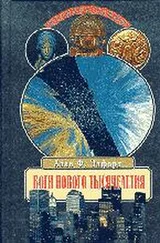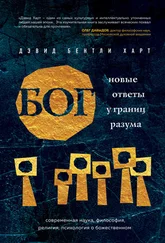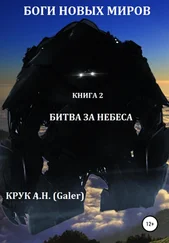Джим Моррисон - Боги и Новые создания
Здесь есть возможность читать онлайн «Джим Моррисон - Боги и Новые создания» весь текст электронной книги совершенно бесплатно (целиком полную версию без сокращений). В некоторых случаях можно слушать аудио, скачать через торрент в формате fb2 и присутствует краткое содержание. Год выпуска: 1969, Жанр: Поэзия, на русском языке. Описание произведения, (предисловие) а так же отзывы посетителей доступны на портале библиотеки ЛибКат.
- Название:Боги и Новые создания
- Автор:
- Жанр:
- Год:1969
- ISBN:нет данных
- Рейтинг книги:4 / 5. Голосов: 1
-
Избранное:Добавить в избранное
- Отзывы:
-
Ваша оценка:
- 80
- 1
- 2
- 3
- 4
- 5
Боги и Новые создания: краткое содержание, описание и аннотация
Предлагаем к чтению аннотацию, описание, краткое содержание или предисловие (зависит от того, что написал сам автор книги «Боги и Новые создания»). Если вы не нашли необходимую информацию о книге — напишите в комментариях, мы постараемся отыскать её.
Боги и Новые создания — читать онлайн бесплатно полную книгу (весь текст) целиком
Ниже представлен текст книги, разбитый по страницам. Система сохранения места последней прочитанной страницы, позволяет с удобством читать онлайн бесплатно книгу «Боги и Новые создания», без необходимости каждый раз заново искать на чём Вы остановились. Поставьте закладку, и сможете в любой момент перейти на страницу, на которой закончили чтение.
Интервал:
Закладка:
view these dream shows from either side of the screen. When women later
began to be admitted, they were allowed to attend only to shadows.
Male genitals are small faces
forming trinities of thieves
and Christs
Fathers, sons, and ghosts.
A nose hangs over a wall
and two half eyes, sad eyes,
mute and handless, multiply
an endless round of victories.
These dry and secret triumphs, fought
in stalls and stamped in prisons,
glorify our walls
and scorch our vision.
A horror of empty spaces
propagates this seal on private places.
Kynaston's Bride
may not appear
but the odor of her flesh
is never very far.
A drunken crowd knocked over the apparatus, and Mayhew's showman,
exhibiting at Islington Green, burned up, with his mate, inside.
In 1832, Gropius was astounding Paris with his Pleorama. The audience was
transformed into the crew aboard a ship engaged in battle. Fire, screaming,
sailors, drowning.
Robert Baker, an Edinburgh artist, while in jail for debt, was struck by the
effect of light shining through the bars of his cell through a letter he was
reading, and out of this perception he invented the first Panorama,
a concave, transparent picture view of the city.
This invention was soon replaced by the Diorama, which added the illusion
of movement by shifting the room. Also sounds and novel lighting effects.
Daguerre's London Diorama still stands in Regent's Park, a rare survival,
since these shows depended always on effects of artificial light, produced
by lamps or gas jets, and nearly always ended in fire.
Phantasmagoria, magic lantern shows, spectacles without substance. They
achieved complete sensory experiences through noise, incense, lightning,
water. There may be a time when we'll attend Weather Theaters to recall the
sensation of rain.
Cinema has evolved in two paths.
One is spectacle. Like the Phantasmagoria, its goal is the creation of a total
substitute sensory world.
The other is peep show, which claims for its realm both the erotic and the
untampered observance of real life, and imitates the keyhole or voyeur's
window without need of color, noise, grandeur.
Cinema discovers its fondest affinities, not with painting, literature, or theater,
but with the popular diversions — comics, chess, French and Tarot decks,
magazines, and tattooing.
Cinema derives not from painting, literature, sculpture, theater, but from
ancient popular wizardry. It is the contemporary manifestation of an evolving
history of shadows, a delight in pictures that move, a belief in magic. Its
lineage is entwined from the earliest beginning with Priests and sorcery, a
summoning of phantoms. With, at first, only slight aid of the mirror and fire,
men called up dark and secret visits from regions in the buried mind. In these
seances, shades are spirits which ward off evil.
The spectator is a dying animal.
Invoke, palliate, drive away the Dead. Nightly.
Through ventriloquism, gestures, play with objects, and all rare variations of
the body in space, the shaman signaled his «trip» to an audience which
shared the journey.
In the seance, the shaman led. A sensuous panic, deliberately evoked through
drugs, chants, dancing, hurls the shaman into trance. Changed voice,
convulsive movement. He acts like a madman. These professional hysterics,
chosen precisely for their psychotic leaning, were once esteemed. They
mediated between man and spirit-world. Their mental travels formed the crux
of the religious life of the tribe.
Principle of seance: to cure illness. A mood might overtake a people burdened
by historical events or dying in a bad landscape. They seek deliverance from
doom, death, dread. Seek possession, the visit of gods and powers,
a rewinning of the life source from demon possessors. The cure is culled
from ecstasy. Cure illness or prevent its visit, revive the sick, and regain
stolen, soul.
It is wrong to assume that art needs the spectator in order to be. The film
runs on without any eyes. The spectator cannot exist without it. It insures
his existence.
The happening/the event in which ether is introduced into a roomful of people
through air vents makes the chemical an actor. Its agent, or injector, is an
artist-showman who creates a performance to witness himself. The people
consider themselves audience, while they perform for each other, and the gas
acts out poems of its own through the medium of the human body. This
approaches the psychology of the orgy while remaining in the realm of the
Game and its infinite permutations.
The aim of the happening is to cure boredom, wash the eyes, make childlike
reconnections with the stream of life. Its lowest, widest aim is for purgation of
perception. The happening attempts to engage all the senses, the total
organism, and achieve total response in the face of traditional arts which
focus on narrower inlets of sensation.
Multimedias are invariably sad comedies. They work as a kind of colorful
group therapy, a woeful mating of actors and viewers, a mutual semimastur-
bation. The performers seem to need their audience and the spectators — the
spectators would find these same mild titillations in a freak show or Fun Fair
and fancier, more complete amusements in a Mexican cathouse.
Novices, we watch the moves of silkworms who
excite their bodies in moist leaves and weave wet
nests of hair and skin.
This is a model of our liquid resting world
dissolving bone and melting marrow
opening pores as wide as windows.
The «stranger» was sensed as greatest menace in ancient communities.
Metamorphose. An object is cut off from its name, habits, associations.
Detached, it becomes only the thing, in and of itself. When this disintegration
into pure existence is at last achieved, the object is free to become endlessly
anything.
The subject says «I see first lots of things which dance… then everything
becomes gradually connected».
Objects as they exist in time the clean eye and camera give us. Not falsified
by «seeing».
When there are as yet no objects.
Early film-makers, who — like the alchemists — delighted in a willful obscuri-
ty about their craft, in order to withhold their skills from profane onlookers.
Separate, purify, reunite. The formula of Ars Magna, and its heir, the
cinema.
The camera is androgynous machine, a kind of mechanical hermaphrodite.
In his retort the alchemist repeats the work of Nature.
Few would defend a small view of Alchemy as «Mother of Chemistry», and
confuse its true goal with those external metal arts. Alchemy is an erotic
science, involved in buried aspects of reality, aimed at purifying and
transforming all being and matter. Not to suggest that material operations are
ever abandoned. The adept holds to both the mystical and physical work.
The alchemists detect in the sexual activity of man a correspondence with the
world's creation, with the growth of plants, and with mineral formations.
When they see the union of rain and earth, they see it in an erotic sense, as
copulation. And this extends to all natural realms of matter. For they can
picture love affairs of chemicals and stars, a romance of stones, or the fertility
of fire.
Strange, fertile correspondences the alchemists sensed in unlikely orders of
being. Between men and planets, plants and gestures, words and weather.
Читать дальшеИнтервал:
Закладка:
Похожие книги на «Боги и Новые создания»
Представляем Вашему вниманию похожие книги на «Боги и Новые создания» списком для выбора. Мы отобрали схожую по названию и смыслу литературу в надежде предоставить читателям больше вариантов отыскать новые, интересные, ещё непрочитанные произведения.
Обсуждение, отзывы о книге «Боги и Новые создания» и просто собственные мнения читателей. Оставьте ваши комментарии, напишите, что Вы думаете о произведении, его смысле или главных героях. Укажите что конкретно понравилось, а что нет, и почему Вы так считаете.






![Сергей Извольский - Молодые Боги. Новый рассвет [СИ]](/books/415789/sergej-izvolskij-molodye-bogi-novyj-rassvet-si-thumb.webp)



